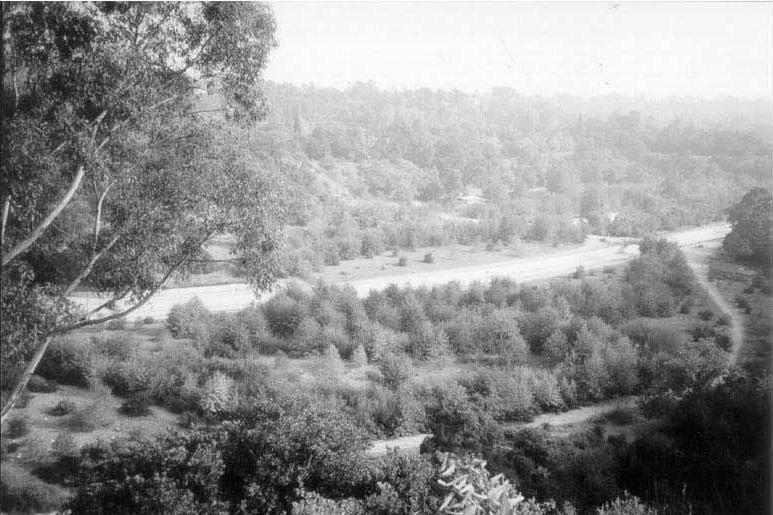Lower Arroyo Stream Restoration Analysis — “A Missed Opportunity”
2001 — The dense riparian vegetation and cattail thicket that has sprouted in Pasadena’s Lower Arroyo in the last five years has attracted a lot of interest from walkers and Arroyo aficionados. Now two graduate students in the landscape architecture program of the University of California at Berkeley have completed an analysis that describes the Browning Ferris Industries (BFI) low-flow stream project as “a missed opportunity.”
The analysis is very timely because the Arroyo Seco Master Plan, recently released by the City of Pasadena, recommends extending the BFI approach into the next cove of the Lower Arroyo, the AIDS Memorial Grove at the foot of California Boulevard.
Tanya Patsaouras and Derek K. Schubert, the landscape architecture students, undertook their review for a class last Fall. They reviewed the planning documents for the BFI project, interviewed the project designers, and undertook field observations to examine the results of the restoration project four years after completion. Their report, “Post-Project Appraisal of Low-Flow Channel and Revegetation, Arroyo Seco, Pasadena, California”, now available online, summarizes their findings: “This project represents a missed opportunity to restore the geomorphic and hydrologic processes that make stream restoration sustainable in the long term. The steep canyon walls already provide a contained area where floods could occur without damage to houses. Removing the concrete channel altogether would be the best way to restore the Arroyo Seco and it is still feasible, but the project could have taken other measures to improve the reach.”

The BFI project was planned in the early 90s and completed in 1997, as an environmental mitigation project to compensate for the expansion of Sunshine Canyon Landfill in the San Fernando Valley. The project has dramatically increased the amount of vegetation in the area, but requires considerable maintenance to sustain. Because of the impermeable liner that lies beneath the low-flow streams and the lack of variable flows characteristic of a natural stream, Patsaouras and Schubert state the restoration program does not sustain the full range of processes of a stream ecosystem. "The Lower Arroyo Park project may be a good start toward a goal of connecting habitat along the entire Arroyo Seco,” the landscape architecture students conclude, “but so far it is an artificial island in a sea of urbanism.”
You can view the analysis of the Low-Flow Stream Restoration Project by clicking on this link: Lower Arroyo Analysis